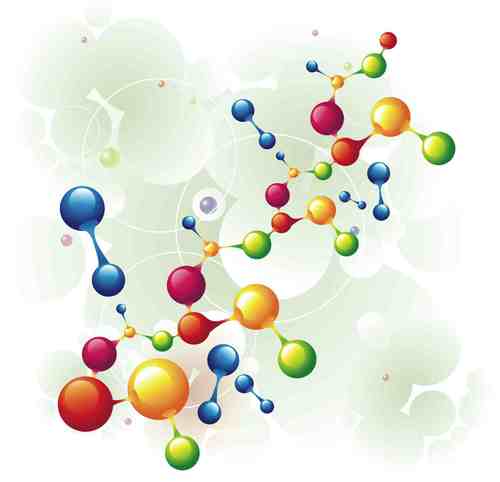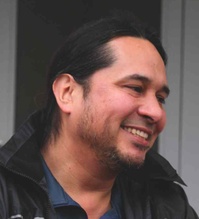 The UO Institute of Molecular Biology (IMB) was founded in 1959, at the end of an eventful decade that brought us Crick and Watson's discovery of DNA's double helix and a veritable revolution in biology.
The UO Institute of Molecular Biology (IMB) was founded in 1959, at the end of an eventful decade that brought us Crick and Watson's discovery of DNA's double helix and a veritable revolution in biology.
The IMB is a research community of 23 UO biologists, chemists and physicists who probe biological questions on a microscopic playing field of molecules. Their findings -- and those of scientists associated and affiliated with the IMB -- often have a direct impact on pharmaceutical and biomaterial applications.
To mark the IMB's 50th anniversary, a host of former students and postdoctoral fellows came back to campus last fall for a special symposium. We share here a brief snapshot of the careers of several of those illustrious scientists.
Preventing Cell Hijacking
Douglass Forbes, PhD, Biology, 1978
Any invading army would want to control its target's lines of communication. Harmful diseases, from the flu to leukemia, are no different when laying siege upon healthy cells. The key for these malevolent bugs is interrupting the flow of transmissions in the nuclear pores -- protein-laden gateways in our cells that carry messages back and forth between the nucleus and the cytoplasm.
Without these operating channels, the DNA in the nucleus can't tell the other parts of the cells what work to do or how to fight off the bad guys.
Understanding the genetic defects of the nuclear pores that can cause these takeovers is at the heart of the research by Douglass Forbes, professor of biology at University of California, San Diego.
Soon after leaving the UO in 1979, she and her fellow alumnus and husband, the late John Newport, discovered that they could assemble a nucleus in a test tube. This gave them the ability to eliminate important proteins during the construction of the nucleus and see how it affected the cell.
Using this method, she has helped to discover many of the proteins in the nuclear pores, how they interact and how they're affected when invasive viruses are able to completely block off the nucleus's signals.
"It's basically as if the entire Internet went through the same gateway, and someone shut it down," she said. "The cell gets hijacked." As with all forms of hijacking, predicting and preventing likely hijacker behavior is the key.
Yeast Common Denominator
Marc Meneghini, PhD, Biology, 2000
Marc Meneghini's interests concern one of biology's most fundamental problems: how cells differentiate -- in other words, how they become the type of cell they are destined to become.
In his groundbreaking experiments, Meneghini has focused on one particular model organism, baker's yeast, which has previously contributed greatly to science's understanding of cell differentiation. However, it has long been conventional wisdom that yeast possess limited relevance to understanding how human cells develop into new and various types of cells.
But Meneghini's lab at the University of Toronto has discovered that yeast utilize the same key molecular mechanisms to accomplish differentiation as mammalian cells, particularly stem cells. This means that the cellular activity of yeast, once thought to be about as complex as a rotary phone, is actually extremely relevant to understanding how human cells develop and specialize. This work could prove profoundly useful, as malfunctions in cell division and cell differentiation lead to tumors and cancer.
One of his lab's more significant findings has been related to what's called apoptosis, or the programmed death of cells. Apoptosis can be regarded as another way in which cells differentiate. In fact, it often functions to kill off damaged cells before they proliferate excessively, basically serving as a built-in cancer guard. Meneghini has discovered that yeast execute a robust form of apoptosis, again utilizing the same mechanisms as mammals.
"With the tools we have to manipulate the yeast cell, we're only limited by our imaginations," he said. "It's a good harbinger for what we might be able to do."
Reanimator
Mark Roth, BS, Biology, 1979
Described in Esquire as a real-life "mad scientist," Mark Roth has proven to be a maverick in the world of microbiology, making waves with his groundbreaking work in suspended animation. A 2007 recipient of a MacArthur "genius" grant,
Roth has shown that toxic chemicals such as carbon monoxide can put small animals into suspended animation (extended states of low oxygen usage) from which they can be revived without any serious side effects. Recently, for example, he has used hydrogen sulfide to reduce the core temperature of mice to 10 degrees Celsius without physically harming them.
It's believed these breakthroughs could bring new treatments for cancers, strokes and any sort of maladies related to a lack of oxygen. It could also help develop technology that would improve the survival rate of soldiers injured on the battlefield.
In 2005, Roth founded a Seattle biotech company, which later became Ikaria Holdings, now a leader in the development of therapeutic gases for critical-care treatments. A major supporter of his work, the Defense Advanced Research Projects Agency, or DARPA, gave him the 2007 Award for Significant Technical Achievement.
Roth is an affiliate professor of biochemistry at the University of Washington and he has published articles in publications such as Science and Proceedings of the National Academy of Sciences.
He also appears in Ripley's Believe It Or Not. Watch Mark Roth's talk at the recent TED conference.
Bad Bugs and Best Practices
Molly Schmid, Postdoctoral Fellow
Like a preposterously huge spring snake in a can, the spindly DNA inside bacteria is actually thousands of times larger than the cells themselves, which begs the question: How does the DNA fold itself up without getting all tangled?
While doing postdoctoral work at UO in the 1980s, Molly Schmid studied how these gargantuan DNA molecules organized themselves within tiny microbes. While she didn't know it at the time, what she learned would lead to groundbreaking advances in how the pharmaceutical industry discovers antibiotics.
Now a professor studying biotech entrepreneurship at Keck Graduate Institute in Claremont, Ca., Schmid had previously joined a start-up called Microcide Pharmaceuticals in the late 1990s. Once there, using the foundation of microbial DNA knowledge she gained at the UO, she focused on creating new methods for the discovery of antibiotics for what physicians call "bad bugs," diseases such as pneumonia, strep throat and E. coli that are extremely resistant to existing medicines.
The lab did this by isolating genes within the microbes that are the targets for new antibiotics, finding that only 10 percent of genes were valuable for this line of study. They did this by creating bacterial mutants that would die at certain temperatures, and through various experiments they were able to identify which genes were keeping the bacteria alive.
"We need new antibiotics and these new genomic techniques can find new leads," she said. "Many of the techniques from Microcide are now widely adapted by pharmaceutical companies."
Unfortunately, Microcide eventually folded because of financial problems, a not uncommon fate for biotech companies. It's now Schmid's mission as a researcher at KGI to study and evaluate best practices that could help stabilize the field and make companies like her former employer more sustainable.
"I'm looking for ways to make the process of drug discovery cheaper, more efficient and less risky," she said.
Help for the Alcohol Challenged
Raymond White, BS, General Science, 1965
While all humans are about 99.9 percent genetically identical, Raymond White, a professor of neurology at the University of California, San Francisco, has made a name for himself by focusing on the nearly infinitesimal amount of disparity.
Considered a pioneer in the mapping of the human genome, he has worked to isolate gene "variants" that are at the root of heredity-related diseases such as cancer and neurological disorders. Using advanced DNA technology, he was able to detect and develop genetic markers -- chromosomal segments that, while not causing a particular disease, exist in concert with those that do. He and his laboratory played important roles in identifying the genes associated with familial polyposis, a form of colon cancer, and neurofibromatosis, a severe skin disease.
In 2002, he was named the director of the Ernest Gallo Clinic and Research Center at UCSF where he has been studying how the confluence of genetics and environment relate to alcoholism and alcohol abuse. The center is working to identify genes related to alcoholism through sequencing of "candidate" genes and genome-wide scans in several populations, including "alcohol-challenged" subjects from San Diego (UCSD and San Diego State freshmen) as well as individuals with alcohol dependence from the Central Valley of Costa Rica, a population that's had little infusion of genes from immigrants or outsiders.
It's hoped that the results of this research will not only help create medications to treat some forms of alcoholism but also to help tailor addiction therapies to the specific needs of a patient.
- Profiles by Marc Dadigan

It's In Their DNA
Online Extras
Sing Along With A Mt. St. Helens Ballad
 When the volcano erupted, a UO professor discovered that local residents consoled themselves through song.
When the volcano erupted, a UO professor discovered that local residents consoled themselves through song.
What's Your Story?
 Where were you on May 18, 1980? Got a Mt. St. Helens tale to tell?
Where were you on May 18, 1980? Got a Mt. St. Helens tale to tell?
Suspended Animation
Watch Mark Roth's talk on "hibernation on demand" at the recent TED Conference.Peer Into Alan Alda's Brain
 Join UO neuroscientists as they bring the host of the PBS series, The Human Spark into their brain research lab.
Join UO neuroscientists as they bring the host of the PBS series, The Human Spark into their brain research lab. Autism and Animals
 Temple Grandin, perhaps the world's best known person with autism, drew an overflow crowd to her UO talk.
Temple Grandin, perhaps the world's best known person with autism, drew an overflow crowd to her UO talk.
Once In a Lifetime
 That's how Roger Jacob describes his chance to study his tribal language, Sahaptin, with Yakama elder Virginia Beavert.
That's how Roger Jacob describes his chance to study his tribal language, Sahaptin, with Yakama elder Virginia Beavert.
From Chechnya, With Love
 Watch a slideshow about Elena Rodina's journalistic globetrotting, from the Arctic Circle to Cuba.
Watch a slideshow about Elena Rodina's journalistic globetrotting, from the Arctic Circle to Cuba.
